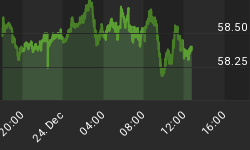The 2010 Kalamazoo spill and the 2013 Exxon leak in Arkansas are the most glaring incidents, but these are just the big leaks that are found right away and reported.
Most leaks are found eventually -- but there is money to be saved and damage to be avoided by catching them at the smallest rupture. Right now, we rely on pigs in the pipeline to do this.
It's called "pigging". Pigs are inspection gauges that can perform various maintenance operations on a pipeline -- from inspection to cleaning -- without stopping the pipeline flow. The first "pigs" were used strictly for cleaning and they got their name from the squealing noise they emitted while travelling through the pipeline. The current generation of "smart pigs" can detect corrosion in the pipeline and are thus relied on for leak detection.
The Kalamazoo and Arkansas leaks were massive and caused by complete pipeline ruptures. These are rare incidents that account for less than 10% of leaks. But the small leaks--those that traditional pipeline detection systems don't catch -- account for more than 90% of US pipeline leaks.
According to a recent report from the U.S. Department of Transportation Pipeline and Hazardous Materials Safety Administration (PHMSA), the majority of leaks are smaller but can persist for months or even years, and those that are even reported are generally done so by people who have stumbled upon them by accident.
The fact remains that current systems and technologies only detect 50% of leaks. We need new solutions if we want to avoid another Arkansas, or another Kalamazoo.
The "pigs" are the darlings of the regulators, who force operators who have had any problems to "pig" their lines at a massive cost of over $1,000 per kilometer.
Certainly, today's smart pigs are well advanced beyond their ancestors -- the balls of rags wrapped with barbwire, but they have their shortcomings.
Pigs can spot general corrosion and identify potential areas of concern, but they cannot detect pinholes in pipelines as their spatial resolution is poor and they can only see corrosion that is 1-2 inches in size. This is significant because a small leak of 10 barrels per day from a liquid pipeline operated at a standard pressure would come from a hole much smaller than this.
They are also only deployable over tens of kilometers, not the thousands needed.
Even if all the pipelines in the world were "pigged" every year, a pipeline operator would still not be able to ensure that small leaks are being detected.
For the larger pipes, the industry relies on SCADA. SCADA is a basic infrastructure monitoring system, where remote hubs relay data back to central monitoring point, using fiber-optic cable or other communications equipment. But it is not enough on its own.
A case in point is this: A SCADA system was working normally on the Pegasus pipeline in Arkansas at the time of the rupture and helped Exxon verify that an accident had occurred. Pegasus did not, however, have a Computational Pipeline Monitoring (CPM) program in place on the pipe. It wasn't enough. Indeed, in late 2012, PHMSA issued a 17-page warning to Exxon about its insufficient pipeline leak detection.
Then we have Keystone XL, which is always in the spotlight, most recently when TransCanada said it would opt out of new pipeline leak detection systems and stick with traditional methods that many believe are not good enough.
The 90%+ of leaks are small and more of a concern for the miles and miles of aging pipelines that crisscross the US, while new pipelines, like Keystone XL will benefit from new technologies during their construction, such as better pipe metallurgy and better welding. This will mean less chance of leaks, but not a zero chance. The fact is that the leak detection systems that will be used by new pipelines like Keystone XL (assuming it gets the green light), are not really any better than the current fare.
There is new technology floating around out there -- but it's new and relatively untested in the marketplace.
RealSens remote-sensing pipeline detection technology aims to pick up where SCADA and the pigs leave off, detecting leaks over an entire pipeline network.
According to Banica, Synodon's CEO, realSens can actually save companies money by detecting the leaks sooner and faster and thus reducing the amount of spilled product and the environmental damage. But it's a new technology that was only introduced into the market 12 months ago.
Still, some of the big operators remain skeptical of new pipeline leak detection systems, as their cost-saving applications are as yet unproven.
"The first hurdle is that operators might not be aware that it exists and what the capabilities are. The second hurdle is that they have a hard time believing it works and have to see proof through customer field tests, which are currently ongoing," Banica told Oilprice.com.
But the issue of pipeline leak detection will increasingly be on everyone's radar following the Quebec train disaster that killed at least 38 people, and counting. No pipeline failure has ever come close to this level of human carnage. This will help shape the transport debate.
What the Quebec tragedy demonstrates, says Banica, is that pipelines are a far better option than rail. "Whereas pipelines do not kill as many people as rail (or even truck transport, as more drivers die due to accidents), they do pose a bigger environmental risk than rail due to larger potential leaks and releases."
By James Stafford of Oilprice.com
















